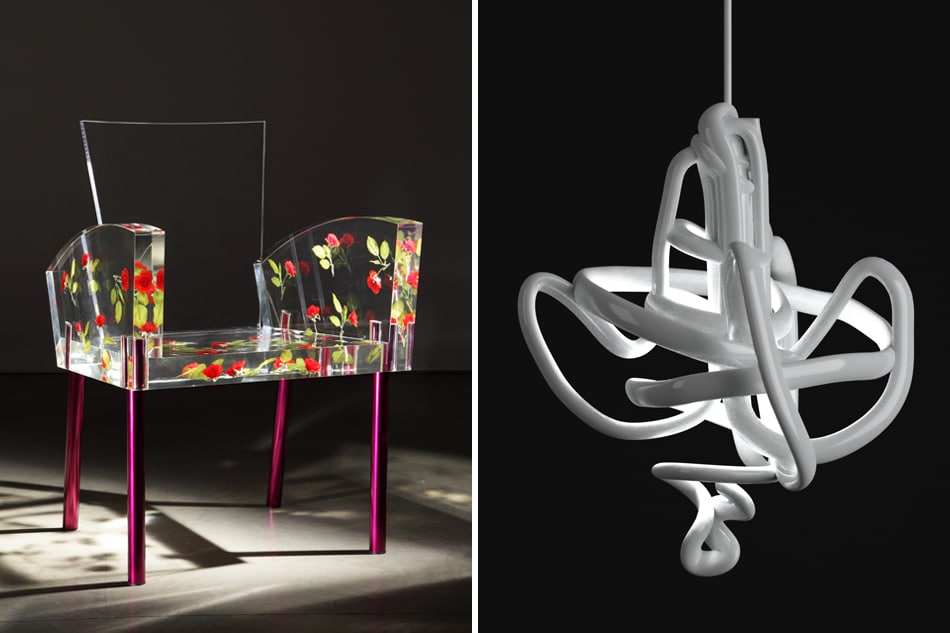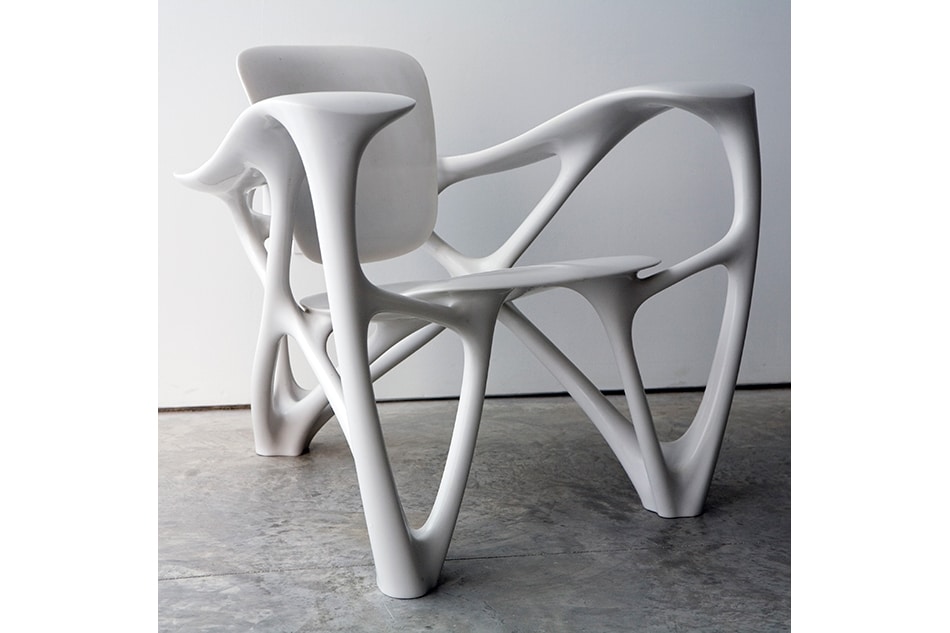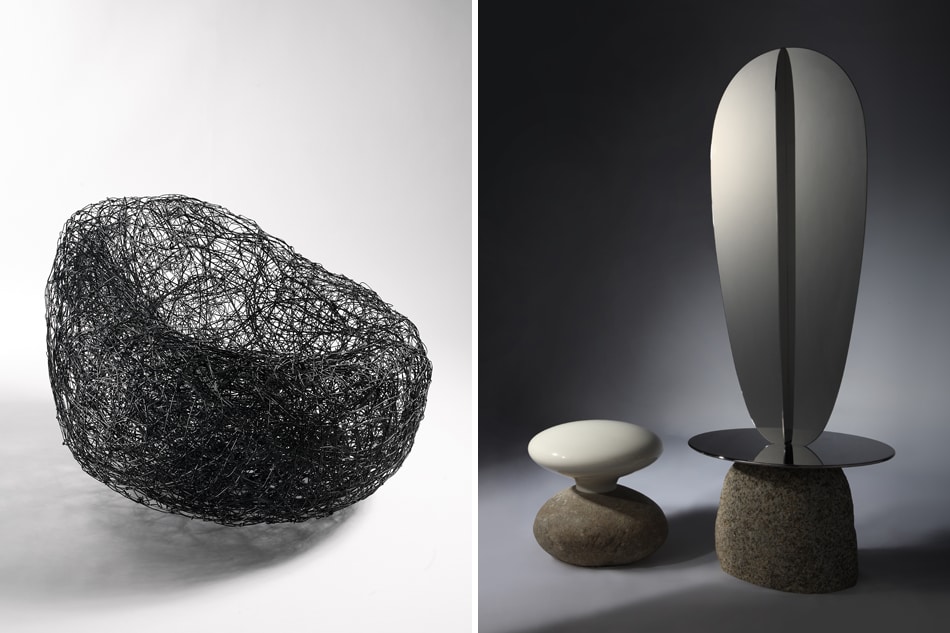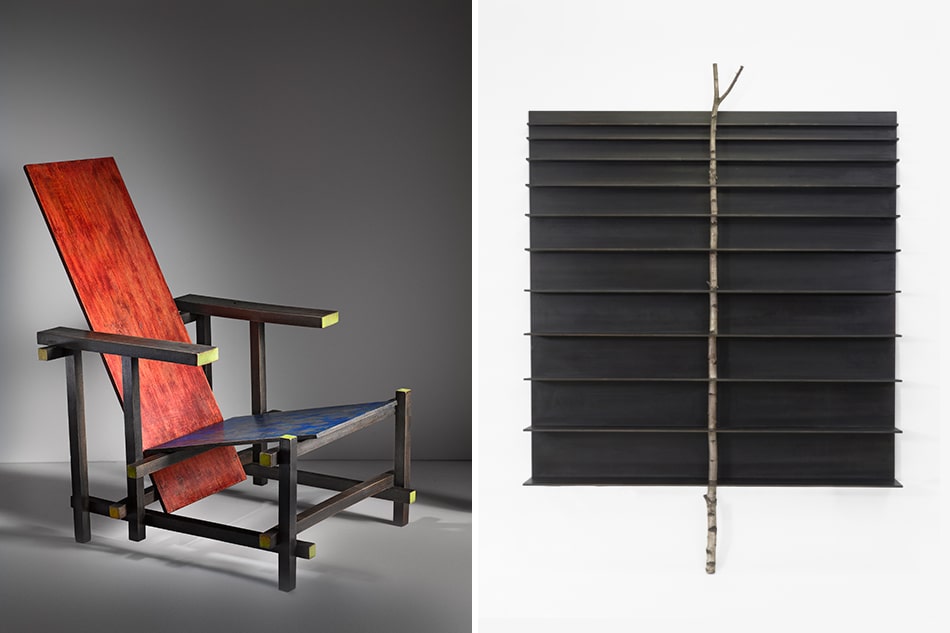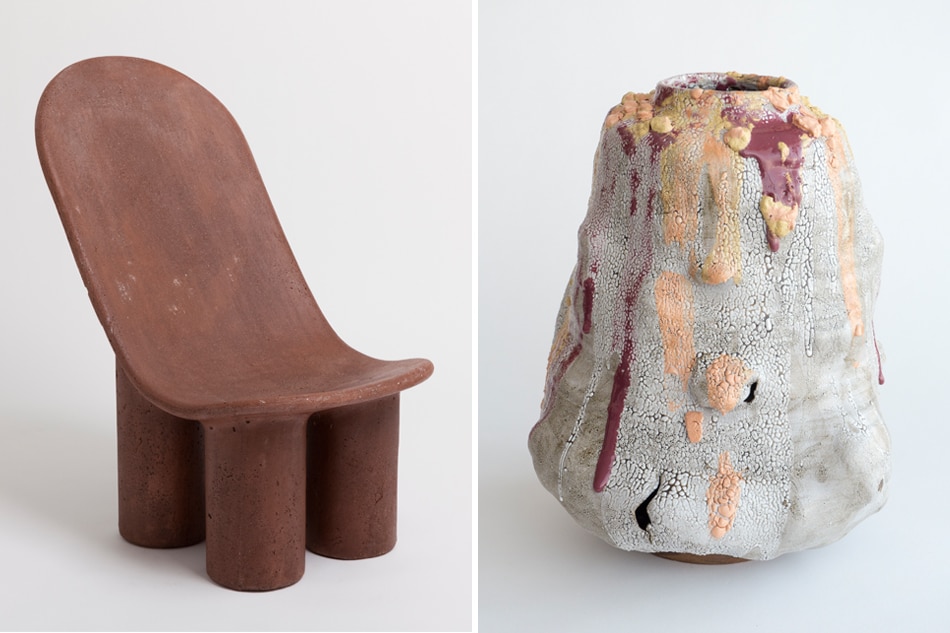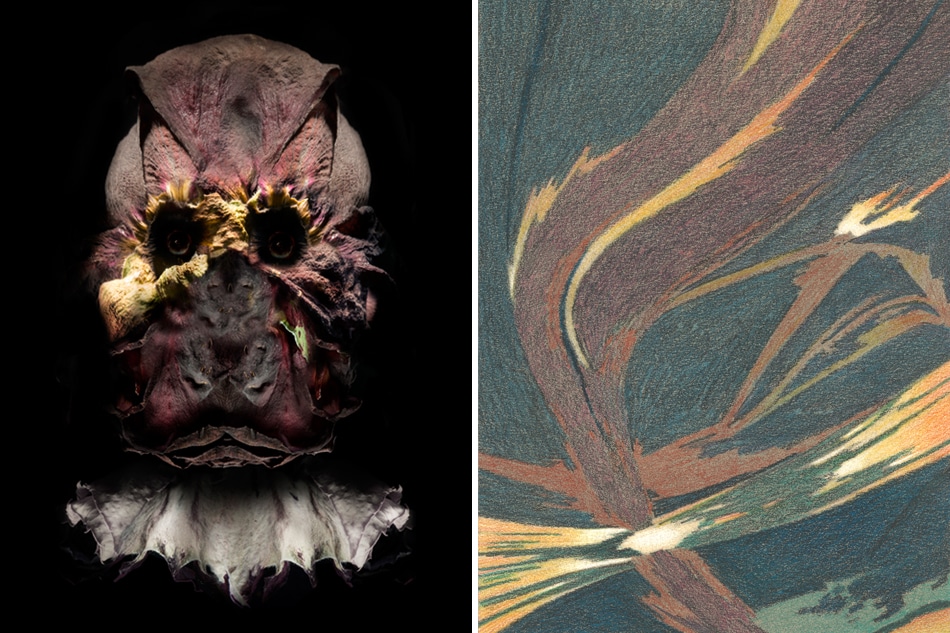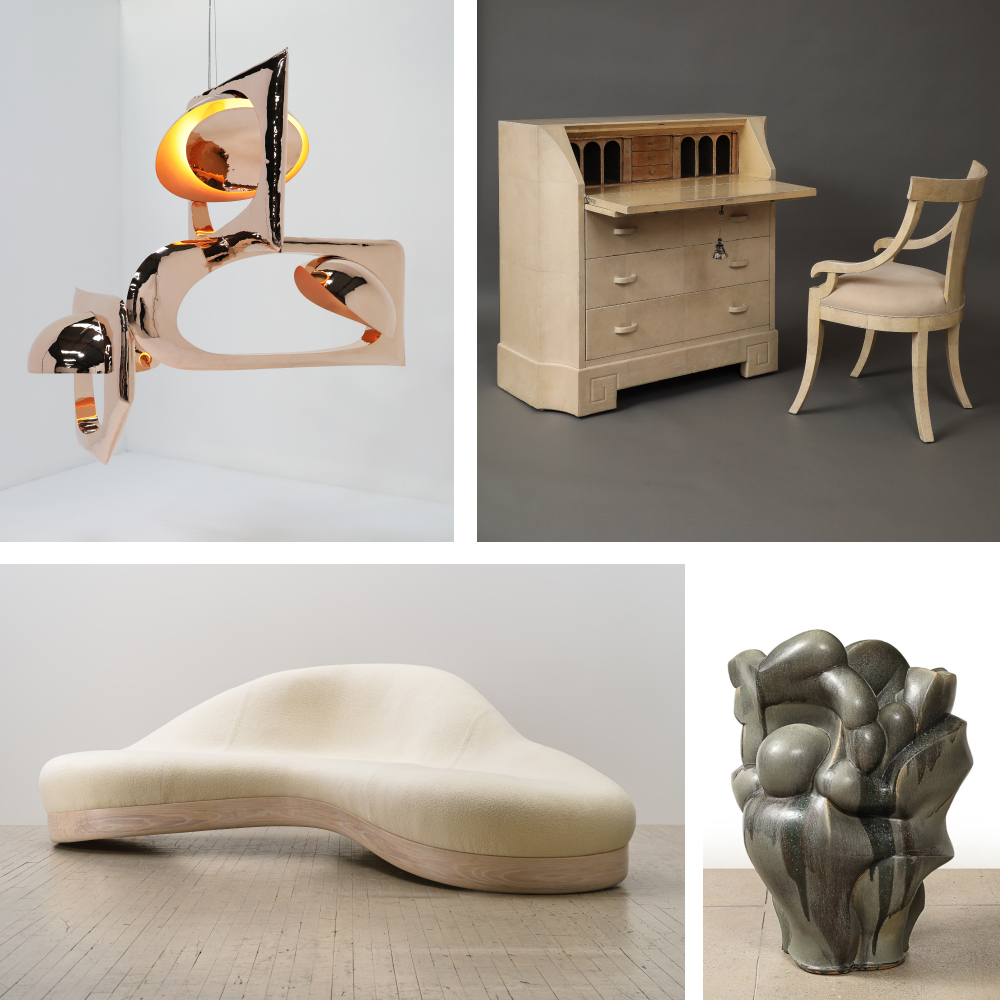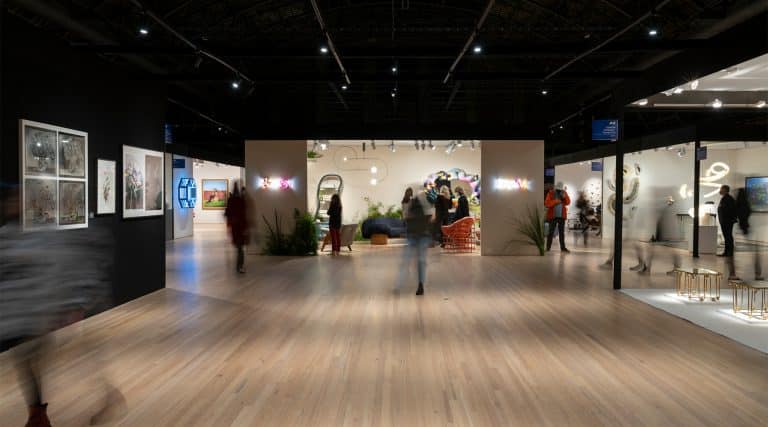
May 22, 2017The 10th anniversary show at Friedman Benda brings together the gallery’s entire stable of designers, including Paul Cocksedge, who is pictured here perched on his cantilevered work Poised (photo by Mark Cocksedge). Top: A series of 50 Manga chairs by Nendo, 2015 (photo by Kenichi Sonehara). All images courtesy of Friedman Benda and the artists
Since its founding, in 2007, Friedman Benda has been known for its commitment to innovative contemporary design by an impressive — and never predictable — roster of designers of different generations, nationalities and viewpoints. So, in honor of its 10th anniversary, the Manhattan gallery is presenting “dna10,” an exhibition that runs through June 10 and celebrates its history by examining new and earlier work by all its designers, past and present. One of the exhibition’s aims, according a statement from the gallery, is “to shine a light onto the beautiful chaos that is contemporary design.”
Gallery founder Marc Benda and his partner, Jennifer Olshin, have structured the exhibition so that it begins with what they consider “archetypes,” five works that represent highlights in the history of design from the early 20th century to the beginning of the 21st: Earliest is the Dutch designer and architect Gerrit Rietveld’s angular, brightly painted wood Red Blue chair, from 1922, which the gallery terms “the most iconic chair ever” and which exemplifies Rietveld’s position at, as Benda puts it, “the nexus of visual art, architecture and design.”
The City and Design, a 1965 poster by the Japanese artist Tadanori Yokoo, who worked with filmmaking giants like Akira Kurasawa and Yukio Mishima, demonstrates his gift for bringing what Benda calls “a Pop art sensibility” to Japanese culture in the 1960s. Ettore Sottsass’s 1966 Large Aphrodisiac Vase (for Conserving Contraceptive Pills), one of the Italian master’s famous ceramic “totems,” embodies his revolutionary rejection of modernism’s functionalist ethos.
A 1989 example of the Japanese designer Shiro Kuramata’s Miss Blanche chairs, made of acrylic resin, artificial roses and aluminum, expresses the idea that “a chair can be beautiful and essential” (one of the 56 made brought a record £269,000 at Sotheby’s in London in 2015). Finally, also from 1989, is a group of nine Solohouse drawings by the visionary architect Lebbeus Woods, who, although only one of his buildings was realized during his lifetime, influenced such cutting-edge architects as Ron Arad and Daniel Libeskind.
Once past this quintet of now-classic objects, visitors are presented with at least one piece from each of the designers that Friedman Benda currently represents, among them the octogenarian provocateur Wendell Castle; the young British designer Paul Cocksedge, known for his limit-pushing exploration of materials and technology; the Korean artist Byung Hoon Choi, who uses stone and metal to create powerful, totemic objects; the Los Angeles ceramic artist Adam Silverman; and the British designer Faye Toogood, whose exhibition at the gallery earlier this year included furniture, objects and tapestries that explored the idea of animism.

Italian artist Ettore Sottsass leans against his 1966 Large Aphrodisiac Vase (for Conserving Contraceptive Pills), one of the five “archetypes” in “dna10.” Photo by Erik & Petra Hesmerg, courtesy of Friedman Benda and Ettore Sottsass
The legendary Italian architect Andrea Branzi’s Tree 5, with its patinated-aluminum shelves supported by a slender birch-tree trunk, shares space with the compellingly strange mixed-media cabinet the Scrappy One, by Misha Kahn (the gallery’s youngest designer), and one of the Japanese design studio Nendo’s series of 50 Manga chairs. In addition to the objects themselves, the exhibition examines each designer’s process and practice with drawings, sketches, videos and models. The Dutch digital-design pioneer Joris Laarman, for example, employed software based on the growth patterns of actual bones in creating his 2008 Bone armchair, one of the two chairs by Laarman included the show.
The experimental nature of the objects on display speaks to the “dna” of the exhibition’s title. When Benda founded the gallery with his mentor, the renowned risk-taking decorative-arts dealer Barry Friedman (who has retired from the partnership), “we wanted to find truly new voices,” Benda explains. Today, both he and Olshin, who joined the gallery as its founding director in 2007, consider themselves obsessed with design. Benda grew up in Zurich, the son of parents who collected 20th-century design and took him to countless galleries, auctions and flea markets, to the point that he was selling pieces on his own as a student. Olshin worked at the Metropolitan Museum of Art and in Christie’s department of American paintings, furniture and folk art, and oversaw a gallery for interior designer Anthony Ingrao where, she says, “we mixed contemporary art and antique furniture.”
If the works on display seem disparate, that’s the plan. “We look for designers who don’t fit into our program,” Benda explains, adding that “the links build over time.” What is common to all these creators, Olshin says, is that “there’s a commentary embedded in every work — destruction and resurrection in each piece. But it’s not a clash. It’s a reunion.”
This diversity means that the gallery doesn’t have a signature look or aesthetic. And that’s fine with Benda and Olshin. “The logic of many galleries is that a few artists pull the weight, and others never quite do,” says Benda. “What’s unique here is that we find an audience for pretty much everyone.”


